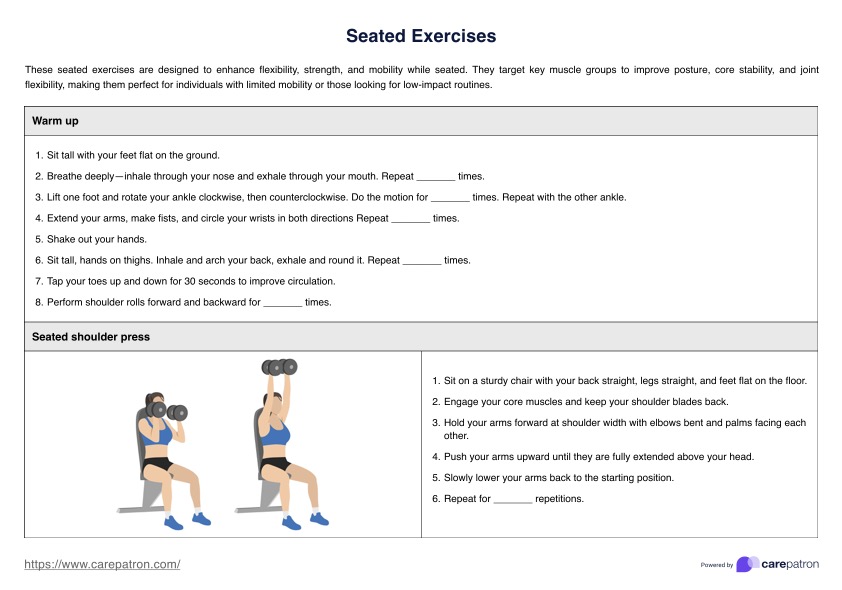The best seated exercise depends on the person's goals. For strength, seated shoulder presses are excellent for building upper body muscles. For flexibility and mobility, spinal twists and cat-cow stretches are highly effective, improving posture and reducing stiffness.

Seated Exercises PDF
Learn various seated exercises for seniors and individuals with limited mobility. Download our free Seated Exercises PDF to your patients improve their overall wellness.
Seated Exercises PDF Template
Commonly asked questions
Yes, seated exercises can be highly effective when performed consistently and with proper form. They target various muscle groups, improve flexibility, and enhance circulation. They’re particularly beneficial for individuals with mobility limitations or those seeking low-impact workouts.
Seated workouts can contribute to weight loss combined with a balanced diet and active lifestyle. They help burn calories, build muscle, and boost metabolism. While they may not be as calorie-intensive as high-impact exercises, they’re a great starting point for increasing physical activity.
EHR and practice management software
Get started for free
*No credit card required
Free
$0/usd
Unlimited clients
Telehealth
1GB of storage
Client portal text
Automated billing and online payments











